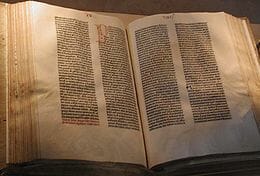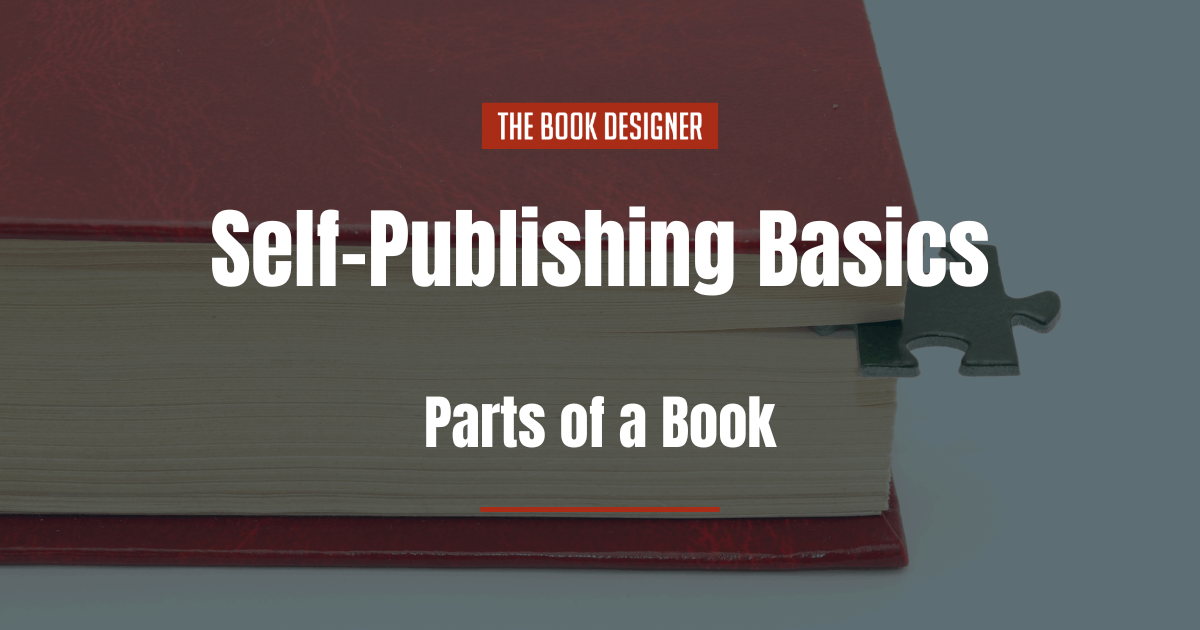The history of book printing goes back to the first Bibles pulled sheet by sheet off Johannes Gutenberg’s presses in Mainz, Germany in the late fifteenth century. The first books were attempts to replicate the handwritten books of the time, which varied widely. Over the centuries publishers have gradually established conventions about the parts of a book that should be included.

Although type design is often likened to architecture, you could also argue that the construction of a book is in some way architectural. The first order of business in creating a blueprint for book construction is to identify the parts of a book and the order in which convention—the inherited wisdom of the logic of the book from all the book creators that have preceded us—dictates they should appear.
To guide you in creating your book, follow this list. Certainly, not every book will contain all these elements, but now you know exactly where the parts of a book fit in the scheme of things.
Many publishers have been guided by the history and traditions of print publishing even as they have moved toward electronic publishing … including the logical order of elements in a printed work. —Chicago Manual of Style, 15th edition.
Table of Contents
What are the Basic Parts of a Book?
Books are generally divided into three parts: The frontmatter, the body of the book, and the backmatter. Each contains specific elements, which should appear in a specific order. Certainly, authors who know and understand these divisions may well have aesthetic or organizational motives to stray from these conventions, but usually they have a good reason to do so. Deviation for no reason does not help your book.
Keep in mind that all of these parts of a book don’t appear in every book published. Use this list instead to make sure you have the right content in the right category, and that parts of your book appear in the sequence in which they are expected.
Frontmatter
The pages at the beginning of a book before the body of the book. These pages are traditionally numbered with lowercase roman numerals.
Half title—Also called the Bastard title, this page contains only the title of the book and is typically the first page you see when opening the cover. This page and its verso (the back, or left-hand reverse of the page) are often eliminated in an attempt to control the length of the finished book.
Frontispiece—An illustration on the verso facing the title page.
Title page—Announces the title, subtitle, author and publisher of the book. Other information that may be found on the title page can include the publisher’s location, the year of publication, or descriptive text about the book, and illustrations are also common on title pages.
Copyright page—Usually the verso of the title page, this page carries the copyright notice, edition information, publication information, printing history, cataloging data, legal notices, and the books ISBN or identification number. In addition, rows of numbers are sometimes printed at the bottom of the page to indicate the year and number of the printing. Credits for design, production, editing and illustration are also commonly listed on the copyright page.
Dedication—Not every book carries a dedication but, for those that do, it follows the copyright page.
Epigraph—An author may wish to include an epigraph—a quotation—near the front of the book. The epigraph may also appear facing the Table of Contents, or facing the first page of text. Epigraphs can also be used at the heads of each chapter.
Table of Contents—Also known as the Contents page, this page lists all the major divisions of the book including parts, if used, and chapters. Depending on the length of the book, a greater level of detail may be provided to help the reader navigate the book. History records that the Table of Contents was invented by Quintus Valerius Soranus before 82 BCE.
List of Figures—In books with numerous figures (or illustrations) it can be helpful to include a list of all figures, their titles and the page numbers on which they occur.
List of Tables—Similar to the List of Figures above, a list of tables occurring in the book may be helpful for readers.
Foreword—Usually a short piece written by someone other than the author, the Foreword may provide a context for the main work. Remember that the Foreword is always signed, usually with the author’s name, place and date.
Preface—Written by the author, the Preface often tells how the book came into being, and is often signed with the name, place and date, although this is not always the case.
Acknowledgments—The author expresses their gratitude for help in the creation of the book. This part of a book may mention the author’s editors, copyeditors, publishers, beta readers, teachers, friends, family members, or anyone else they feel was instrumental in writing and publishing their book.
Introduction—The author explains the purposes and the goals of the work, and may also place the work in a context. This part of the book may also spell out the organization and scope of the work.
Prologue—In a work of fiction, the Prologue sets the scene for the story and is told in the voice of a character from the book, not the author’s voice.
Second Half Title—If the frontmatter is particularly extensive, a second half title identical to the first, can be added before the beginning of the text. The page following is usually blank but may contain an illustration or an epigraph. When the book design calls for double-page chapter opening spreads, the second half title can be used to force the chapter opening to a left-hand page.
Body
The body is the main portion or content of the book. Among the parts of a book, this is the one that contains the actual story in the case of fiction, or the “meat” of what the author wants to express in nonfiction. In other words, this is what the reader came for.
Part Opening page—Both fiction and nonfiction books are often divided into parts when there is a large conceptual, historical, or structural logic that suggests these divisions, and the belief that reader will benefit from a meta-organization.
Chapter Opening page—Most fiction and almost all nonfiction books are divided into chapters for the sake of organizing the material to be covered. Chapter Opening pages and Part Opening pages may be a single right-hand page, or in some cases a spread consisting of a left- and right-hand page, (or a verso and a recto). Statistically, if a spread opening is used, half the chapters (or parts) will generate a blank right hand page, and the author or publisher will have to work with the book designer to decide how to resolve these right-hand page blanks.
Epilogue—An ending piece, either in the voice of the author or as a continuation of the main narrative, meant to bring closure of some kind to the work.
Afterword—May be written by the author or another, and might deal with the origin of the book or seek to situate the work in some wider context.
Conclusion—A brief summary of the salient arguments of the main work that attempts to give a sense of completeness to the work. This is more common in nonfiction.
Backmatter
The last parts of a book include various citations, notes, and ancillary material are gathered together into the backmatter.
Postscript—From the latin post scriptum, “after the writing” meaning anything added as an addition or afterthought to the main body of the work.
Appendix or Addendum—A supplement of some kind to the main work. An Appendix might include source documents cited in the text, material that arose too late to be included in the main body of the work, or any of a number of other insertions.
Chronology—In some works, particularly histories, a chronological list of events may be helpful for the reader. It may appear as an appendix, but can also appear in the frontmatter if the author considers it critical to the reader’s understanding of the work.
Notes—Endnotes come after any appendices, and before the bibliography or list of references. The notes are typically divided by chapter to make them easier to locate.
Glossary—An alphabetical list of terms and their definitions, usually restricted to some specific area.
Bibliography—A systematic list of books or other works such as articles in periodicals, usually used as a list of works that have been cited in the main body of the work, although not necessarily limited to those works.
List of Contributors—A work by many authors may demand a list of contributors, which should appear immediately before the index, although it is sometimes moved to the front matter. Contributor’s names should be listed alphabetically by last name, but appear in the form “First Name Last Name.” Information about each contributor may include brief biographical notes, academic affiliations, or previous publications.
Index—An alphabetical listing of people, places, events, concepts, and works cited along with page numbers indicating where they can be found within the main body of the work.
Errata—A notice from the publisher of an error in the book, usually caused in the production process.
Colophon—A brief notice at the end of a book usually describing the text typography, identifying the typeface by name along with a brief history. It may also credit the book’s designer and other persons or companies involved in its physical production.
Next: Paginating Your Book
Now that you know the parts of a book, check out the next post in this series, The Book Construction Blueprint, which will describe how to paginate your book.
If you need help completing these different sections for your book, check out our Publishing Package, where we can do the tough work for you.
We also have a preformatted book template you can have for free.
Editor’s Note: This is an updated version of a story that was previously published. We update our posts as often as possible to ensure they’re useful for our readers.




